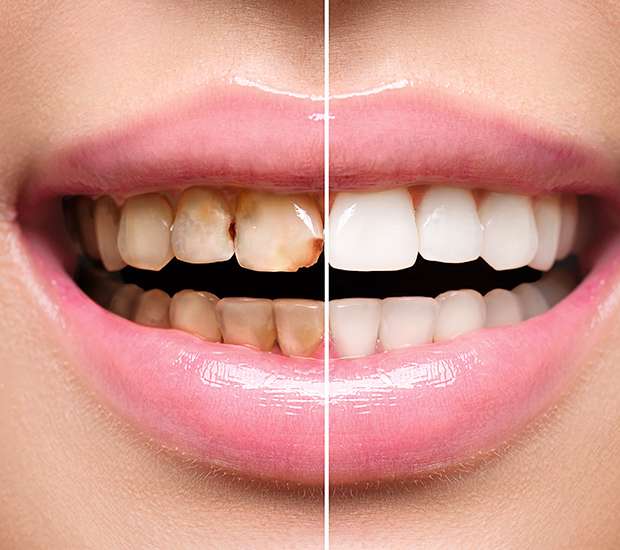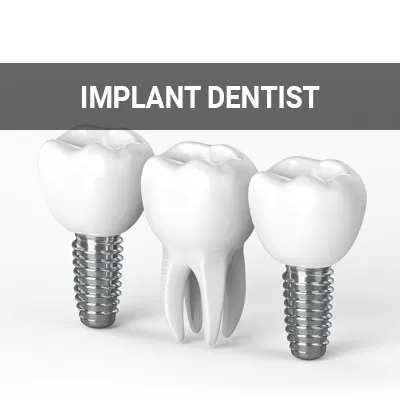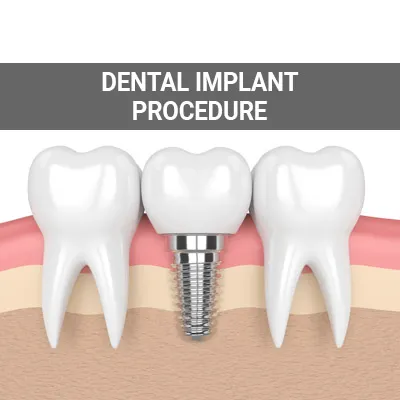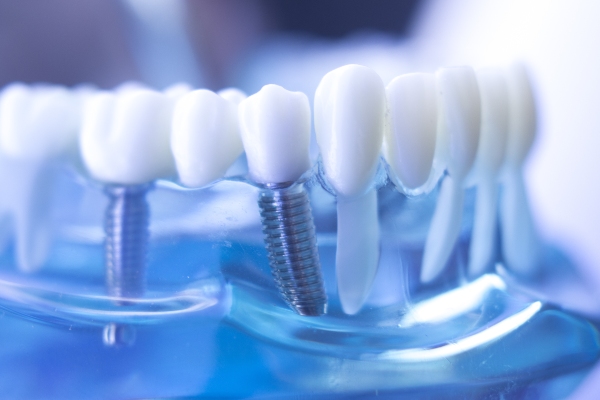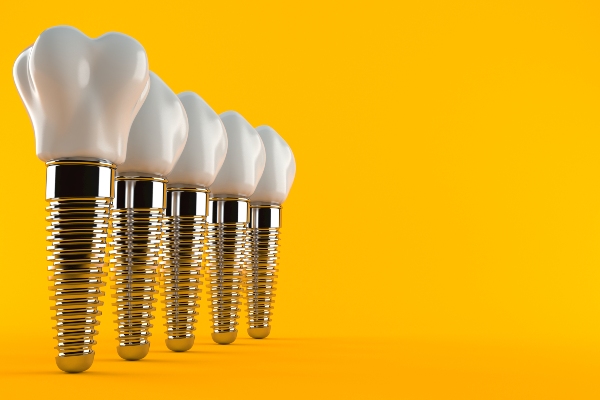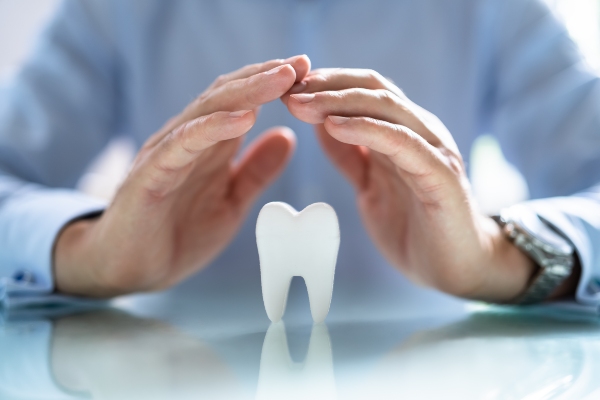Dental Implant Restoration Downey, CA
Dental implants can last decades, but may require maintenance and repair. An implant restoration returns a loose or damaged implant to its original form and function. It is far more common to need restoration than many patients anticipate.
Dental implant restoration is available at Amir Sanjabi Dental in Downey and the surrounding area . Our dedicated team can answer your questions and provide useful information on the process and choose the right treatment form. Call us at (562) 399-9243 to receive more information and schedule a consultation time.
An overview of dental implant restoration
According to the Center for Disease Control and Prevention, and data from the National Health and Nutrition Examination Survey, 91% of adults aged 20–64 had dental caries, and 27% had untreated tooth decay that can lead to tooth loss. But tooth decay is not the only factor that can lead to tooth loss; gum disease is another common cause. Also, many people lose teeth to accidents or trauma. By the age of 44, an estimated 69 percent of Americans have lost at least one tooth. Tooth loss is growing, and the need for solutions is growing with it.
One popular and effective solution is dental implants. They offer an alternative to dentures that need to be removed and cleaned. Implants give the patient an option that most closely resembles natural teeth. Though dental implants are made to last for decades, they still need to be maintained, and that is where implant restoration comes in. Dental implant restoration involves restoring the strength, appearance, and function of a dental implant that has become loose, damaged, or experienced another form of complication.
“Tooth loss is growing, and the need for solutions is growing with it.”
Dental Implant Restoration Basics
Though dental implants are generally successful, there are occasional instances where restoration or replacement is necessary. Fortunately, a failed implant is easy to remove, and the procedure is relatively common for dentists to perform. If the dentist decides that the implant needs replacement, they will remove it and carefully clean the area. As a result, there will be no bone loss around the implant site if there is no need for a bone graft procedure.
However, if there is bone loss, the dentist may use a bone graft to make the implant restoration process possible. However, it may take several months for the bone to heal before a new implant can be inserted. The dentist may discuss ways to mitigate the risk factors that led to the initial implant failure during the healing process. These preventive measures may include quitting smoking, using mouthguards, and more.
“Though dental implants are generally successful, there are occasional instances where restoration or replacement is necessary.”
Replacing Dental Implants
Restoring dental implants consists of two treatment stages: the implant placement and the restorative stage. The implant placement stage can be a one- or two-stage process depending on the approach. In any case, the dentist will place the implant inside the jaw and cover the implant post with a cover screw to prevent bone in-growth. They will then cover both the implant and cover-screw with gingival tissue. The bone will need to heal around the implant for about three to six months, depending on the quality and quantity of the bone. Throughout healing, the bone will fuse or bond with the implant in a process known as osseointegration.
Once the oral tissues have healed fully, the restoration process can begin. For single-implant restorations, the dentist can choose between the screw-retained crown or cement-retained crown, depending on the patient's preferences and the implant's position. The screw-retained crown has a screw access hole that fits over the abutment, featuring an anti-rotation feature to lower the chances of screw loosening. The main advantage of this option is retrievability in case of loosening or fracture and the easy examination of the implant and gums. It also allows the dentist to remove the crown without causing damages.
The other option is the cement-retained crown. Using dental cement, the dentist will fix the crown directly to a custom abutment connected to the implant. Patients with aesthetic concerns will benefit from this option because it assures the most cosmetic appeal. However, the restoration cannot be removed without causing damages to the crown. There is also a concern for residual cement, which may become a medium for bacteria colonies.
“Restoring dental implants consists of two treatment stages: the implant placement and the restorative stage.”
Check out what others are saying about our dental services on Yelp: Dental Implant Restoration in Downey, CA
After the procedure
There is typically some discomfort following an implant restoration and aftercare instructions to follow. To speed up recovery and avoid irritation of the affected area, stick to a soft diet of healthy foods and do not consume beverages high in sugar. Patients are often required to make routine follow-up visits as well.
You can take steps to make your dental implants last and reduce the need for implant restoration. Dentists advise you not only avoid certain foods but also tobacco products and smoking. For dental implants, patients should use a low-abrasion toothpaste along with a soft-bristled toothbrush. Special flosses and interdental brushes can make it easier to keep your dental implants clean and the area around them healthy.
“You can take steps to make your dental implants last and reduce the need for implant restoration.”
Questions Answered on This Page
Q. Why does someone need dental restoration?
Q. What should you do after an implant restoration procedure?
Q. What do I do if my implant feels loose?
Q. Is dental implant restoration common?
Q. What is it like to get dental implants restored?
People Also Ask
Q. When is a dental restoration necessary?
Q. What happens during the implant placement surgery?
Q. What is restorative dentistry?
Q. When should people seek an implant dentist?
Q. How long does it take to place a dental implant?
Q. What dietary and lifestyle changes do I need to make after my dental implant procedure?
Lose and Fractured Implants
If the crown is loose or broken or the abutment that joins it to the implant is loose, it is more likely to be an easy fix. However, If the actual implant post is loose or fractured, things get more complicated. A broken implant post must be taken out and replaced with a new one. The same goes for a loose implant post, but there are cases where the crown may be reused on the new implant. If you have had bone loss, you may need bone grafting and time to heal before receiving the new implant.
No matter what the cause, treat a loose implant as a dental emergency. A loose implant can lead to bone loss and infection, and any type of damage can worsen if ignored. Call our team right away if an implant becomes loose or damaged.
“No matter what the cause, treat a loose implant as a dental emergency.”
Frequently Asked Questions
Q. Is dental implant restoration painful?
A. When you come to the office, the dentist will discuss pain management options with you. Afterward, you can use over-the-counter pain relievers to manage pain. The pain with dental implant restoration is usually minimal if you follow the dentist's instructions.
Q. What happens if damages occur to the implant restoration?
A. The repair procedure depends on the part of the implant that needs repair. If the dental crown suffers damage, the dentist can replace or repair it without touching the titanium implant. If the problem is with the actual implant, the dentist may need to remove the implant and perform a bone graft procedure. It will be impossible to replace a loose implant if the dentist does not correct the issue with the jawbone.
Q. Will other implants fail due to one loose implant?
A. Dental implants have a success rate of more than 95%, which means the chances of failure are low. It is rare for one implant to fail, and even if it does, the others should remain intact. As a precaution, if an injury caused the failure of one implant, you should have the entire teeth checked to ensure nothing else is damaged.
Q. Can I still get dental implants if my tooth went missing a long time ago?
A. Usually, the longer you go without replacing a lost tooth, the lesser your chances of getting dental implants due to loss of bone density. However, this is not a deal-breaker. The dentist may augment the bone or suggest mini dental implants for the tooth restoration process.
Q. How long will my dental implant restoration last?
A. With the proper care, dental implant restorations can last decades. Most patients will not experience any issues after restoration.
Dental Implant Terminology
Call Us Today
Our team offers dental implant restoration to patients who experience complications with artificial teeth supported by implants. If you feel you need a restoration or have concerns with your implant for any reason, give us a call at 562-399-9243 and schedule a time to come in for a consultation.
Helpful Related Links
- American Dental Association (ADA). Glossary of Dental Clinical Terms. 2024
- American Academy of Cosmetic Dentistry® (AACD). Home Page. 2024
- WebMD. WebMD’s Oral Care Guide. 2024
About our business, license, and website security
- Amir Sanjabi Dental was established in 2018.
- We accept the following payment methods: American Express, Cash, Check, Discover, MasterCard, and Visa
- We serve patients from the following counties: Los Angeles County
- We serve patients from the following cities: Downey, South Gate, Paramount, Bellflower, Norwalk, Santa Fe Springs, Bell Gardens, Lynwood, Pico Rivera and Whittier
- CA (License #100612). View License Information and Specifics
- National Provider Identifier Database (1992259592). View NPI Registry Information
- Norton Safe Web. View Details
- Trend Micro Site Safety Center. View Details
Back to top of Dental Implant Restoration
